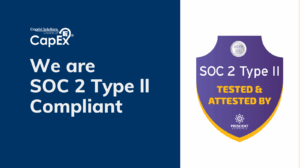Capital expenditure, commonly referred to as CapEx, is an essential aspect of any business’s financial strategy. From acquiring new assets to upgrading existing ones, capital expenses are necessary for businesses to stay competitive and grow.
In the past, CapEx management has been a challenging process for organizations. The process was often manual, time-consuming, and prone to human errors. Companies relied on spreadsheets and email to manage their capital expenditures, resulting in delays, overspending, and poor visibility into the overall CapEx process.
However, with the advent of CapEx management software like CapEx360™, the process has become much more efficient and streamlined. These solutions offer a comprehensive platform for budgeting, forecasting, approvals, and post-investment assessment, ensuring greater accuracy, speed, and control over the entire CapEx process.
Despite these advancements, many organizations still struggle with CapEx management. One of the biggest challenges businesses face is the lack of real-time visibility into the CapEx process. Without a clear understanding of where their capital is being allocated, businesses risk overspending, underutilizing resources, and missing opportunities for growth.
Another issue is the lack of collaboration between departments. Capital expenditures often require input from multiple departments, including finance, operations, and procurement. However, without a centralized platform for collaboration, communication breakdowns can occur, leading to misalignment and delays.
Moreover, budget constraints and limited resources can limit businesses’ ability to invest in capital expenditures. In such cases, companies may need to prioritize investments based on their strategic goals and available resources.
To overcome these challenges, businesses must invest in CapEx management solutions that can streamline the entire process, reduce errors, and improve collaboration. They should also prioritize real-time visibility into the CapEx process, ensure alignment between departments, and prioritize investments based on their strategic goals.
In conclusion, CapEx management has come a long way, but there is still much room for improvement. By investing in the right solutions and processes, businesses can optimize their CapEx process and drive growth and profitability.





